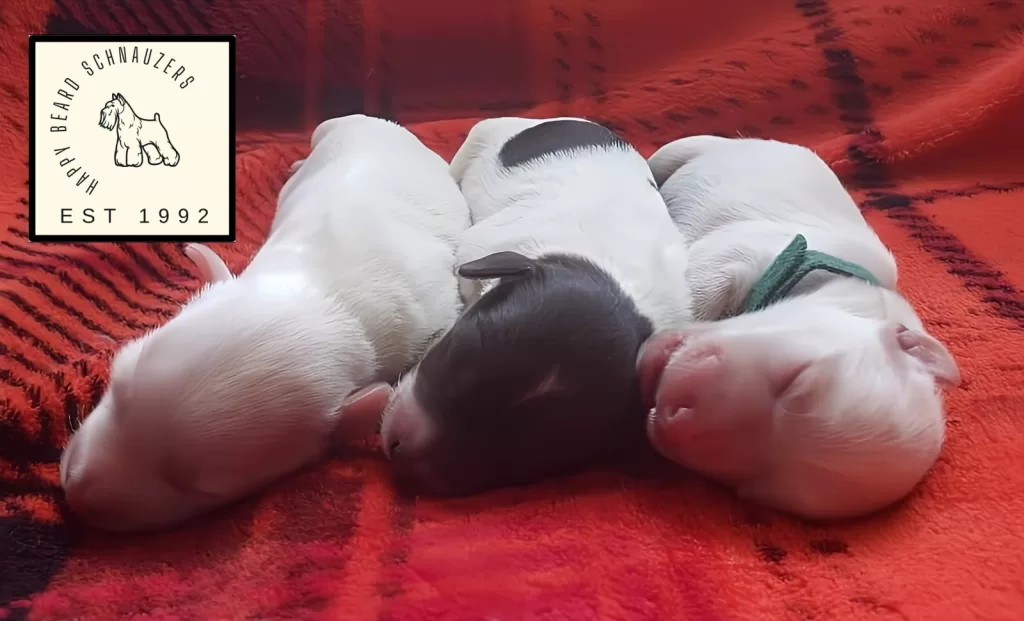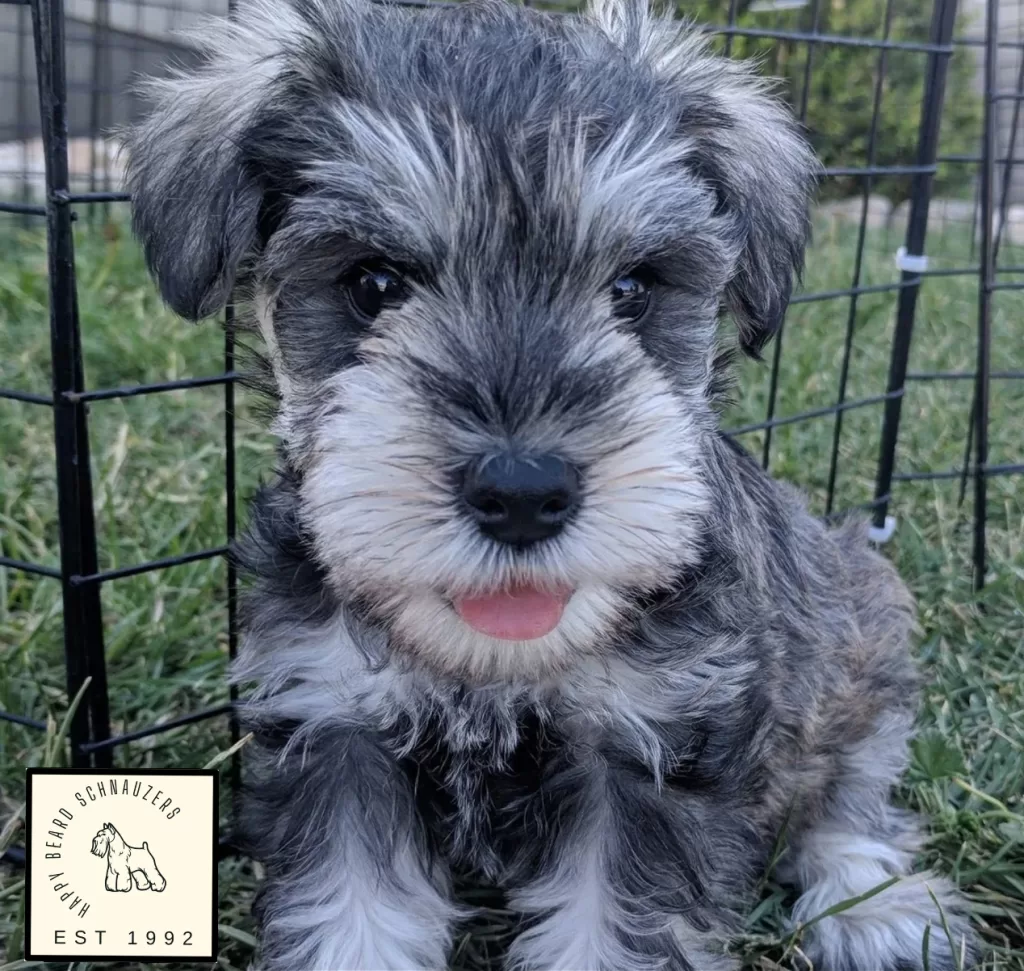Puppyhood is this incredible mix of mystery, excitement, challenges, and curiosity, sprinkled with a dash of transitions. Pups are on a whirlwind journey, honing their physical, cognitive, and social skills, all following a somewhat predictable timeline. It’s surprisingly akin to the timelines and transitions we observe in human babies and toddlers. Just like with kids, grasping the what and when of these developments equips us to anticipate the needs of our furry friends, ensuring they blossom into happy, healthy, and well-adjusted adult dogs.
The Early Days of Puppies: From Birth to Four Weeks Old
- In the initial three weeks, a puppy’s senses remain dormant. Sight, hearing, and smell haven’t kicked in yet, resulting in a lot of time spent in slumber.
- Between the second and fourth weeks, significant developments unfold. Puppies engage with their littermates and mother, opening their eyes, gaining sight, and enhancing their other senses.
- By the fourth week, puppies not only can walk but might also initiate barking and tail-wagging. Before this point, they rely on their mother for stimulation to eliminate; however, around the four-week mark, they begin handling this independently. Additionally, this marks the emergence of those notorious razor-sharp puppy teeth.

Dynamic Transformations in Your Puppies Journey: Weeks Four to EighT
- In this bustling period, the mother initiates the weaning process and imparts essential behavioral lessons to her pups.
- Puppies, during this stage, engage in play with their siblings, akin to learning the unspoken rules of the playground.
- It’s also the phase when young pups start exploring, equipped with a higher fear threshold, allowing for gentle exposure to everyday stimuli in their surroundings.
- The eight-week milestone holds significance in a puppy’s life, often marking the transition to their permanent home. By this point, they have matured enough to adapt to a new environment while retaining a heightened fear threshold.
Puppies and the Phase of Apprehension: Weeks Eight to Twelve
- It may seem counterintuitive to bring your pup home at eight weeks, just as they enter a phase of increased fearfulness and wariness toward new experiences. However, this is also the most impressionable time for them, and positive encounters play a crucial role in helping them adapt to their new surroundings. Take this chance to introduce your pup to various people, animals, and situations, gauging what they can handle.
- Much like a young child, a puppy in this age range acts like a sponge, eagerly absorbing information and experiences. It’s essential to steer clear of frightening or painful encounters as much as possible. In instances where such situations arise, guide your pup through it with a cheerful demeanor, shower them with praise, and respond positively to alleviate any fears they may have.
- Perhaps most fulfilling during this period is the formation of strong attachments between puppies and their caregivers. This marks the time when lifelong relationships are forged, presenting a unique opportunity to build a lasting connection with your furry friend. For more information on bonding with your puppy during this time period, check out our blog : Getting Ready For a New Puppy – Anticipating What’s to Come

Preadolescent Adventures: Weeks 12 to 24 in Puppyhood
- Around 12 weeks, your puppy transitions from being more fearful to becoming increasingly curious and independent. During this phase, they embark on understanding their role in the family hierarchy, showcasing emerging personality traits such as dominance or submissiveness while honing social skills.
- Permanent teeth also make their debut during this period, translating into a phase of relentless chewing. Chewing becomes a vital exploration method for puppies, making chew toys a household essential.
- By sixteen weeks, your pup is primed for schooling. Enrolling in training classes becomes beneficial, offering a chance to learn how to train your pup while they acquire crucial social skills. Opt for classes that are enjoyable for both of you. This period also marks your pup’s readiness for house-training and learning basic commands like “come.”
- Continuing socialization remains pivotal, introducing your pup to new people, places, and other animals. Observing their body language helps you grasp signals of discomfort or fear. Controlled exposure to novel experiences fosters confidence and security in your puppy. With newfound confidence and increasing independence, your pup starts exploring farther from your side.
Embracing Life with Your Adolescent Pup: Six to Twelve Months
- Remember that adorable, cuddly puppy from a few months ago? Well, welcome to the teenage phase! Things are about to get interesting. Dogs in this age range start testing boundaries and often attempt to assert themselves within the pack, challenging both their humans and fellow pets in the household.
- Adolescents in this stage crave a significant amount of stimulation and activity; their boredom threshold aligns with that of a young teenager. Expect some mischief and disobedience as your pup reaches sexual maturity. Consistent training and ample opportunities for play and exercise are key during this period.
- Your puppy transforms into quite the explorer now. Strolls around the neighborhood become thrilling adventures as they utilize scent to understand their surroundings. They’ll be keen on discovering where other dogs reside, the prime spot for a bathroom break, the bushes harboring squirrels, and whose grass offers the best rolling experience. Balancing leash training with opportunities for neighborhood exploration is crucial.

Growing Beyond Puppyhood: 12 to 18 Months
- Emotional maturity typically settles in for most dogs between 12 and 18 months, shaping the temperament and personality they’ll carry into adulthood.
- Smaller breeds generally mature sooner, whereas larger breeds may take a bit longer to reach both physical and emotional maturity.
- Anticipate lingering puppy energy during this period, with the duration varying depending on the breed. In some cases, the energetic phase could extend for several more years
Conclusion
You’ve spent the last 18 months giving your pup a safe environment in which to grow. You’ve been preparing him for adulthood by teaching him to be a good family member, and you’re becoming familiar with his temperament and needs. Most importantly, you’ve created a bond that will last a lifetime. Enjoy the ride!